A customer approached me with a dilemma today. They are 2nd owners of a 10 year old house, and they have a post on their front porch that is rotting away! They previous owners had installed some trim to cover it up, and that too is rotting. The bottom of the post is soft and can be pushed in with minimal force.
My question is this, why did this happen? The house is very new, and I cant think of how there could be enough moisture to eat this post away so quickly!
I need to get back to them soon with an idea of how to fix it in a way that it will not happen again.
Below are some pics of the offending post.
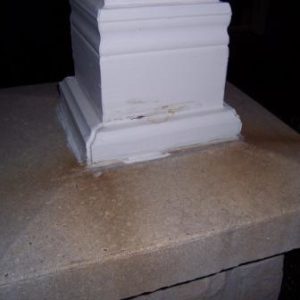
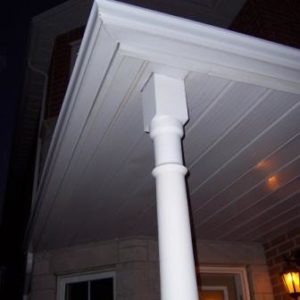


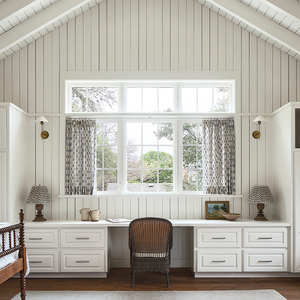
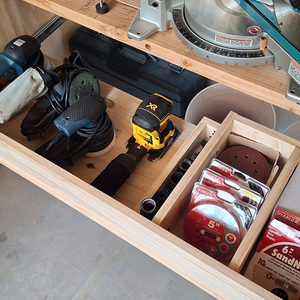
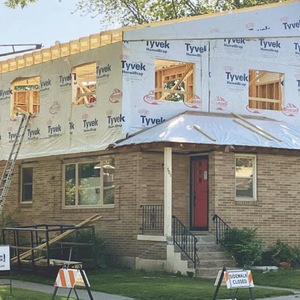
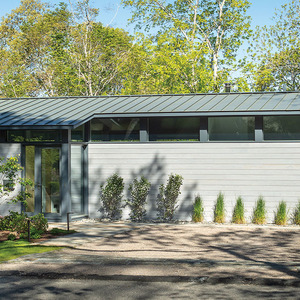













Replies
replace the post and this time make sure the base drains well....
what's the climate there???
Life is not a journey to the grave with the intention of arriving safely in a pretty and well preserved body, but rather to skid in broadside, thoroughly used up, totally worn out, and loudly proclaiming
WOW!!! What a Ride!
Forget the primal scream, just ROAR!!!
does it have / had boring insects or termites...
use a synthetic composistion post...
Life is not a journey to the grave with the intention of arriving safely in a pretty and well preserved body, but rather to skid in broadside, thoroughly used up, totally worn out, and loudly proclaiming
WOW!!! What a Ride!
Forget the primal scream, just ROAR!!!
Wow, thanks for the extremly quick response!No, I definitely think it is a moisture issue. Its in the Toronto area, so we have a fairly humid/ wet climate, and the snow apparently does rest at the bottom of the pole.Thanks!
Dave.
I see wood rot all the time in ten year old houses. It is not unusual, water is hitting it or splashing up on it usually.
Any idea of the species of the post?
IMERC has a great suggestion in using synthetic materials (if possible).
Edited 9/20/2007 8:37 pm ET by Ragnar17
My guess is fingerjoint pine, standard fare here in Toronto.
From a Northwesterner's perspective, a pine post is not a good choice of materials. But I know regional differences in climate greatly affect performance.
I agree with others here that a standoff would help a lot.
Not strange at all. The concrete pier cap absorbs water or even moisture from the air, which is wicked up into the wood.
Synthetic is the way to go. Azek, Kleer, Koma, or something from Fypon.
Ok, So the concensus seems to be that the bottom of the post does not breathe. So, how would I go about fixing this? I assume that I have to remove the soffit, jack the roof, and remove the post. So, do I (A)recommend getting a new post in a synthetic material, which will mean that I need to replace the other post as well, or (B)is there a way to keep the part of the post that is still good and replace the rotten part with either a new section of wood, with the bottom of the new piece having a way to breathe?Thanks!
Ok, So the concensus seems to be that the bottom of the post does not breathe.
yup...
So, how would I go about fixing this? I assume that I have to remove the soffit, jack the roof, and remove the post.
yup...
So, do I (A)
just go to plan "B"...
"A" never seems to work...
recommend getting a new post in a synthetic material, which will mean that I need to replace the other post as well,
if the other one shows rot or the new one doesn't match...
or (B)
at this point you jump to plan "C"...
is there a way to keep the part of the post that is still good and replace the rotten part with either a new section of wood, with the bottom of the new piece having a way to breathe?
how far up the post does the rot go???
you may be able to replace a section and ornate trim the seams...
use a stand off base that doesn't allow CC to wood contact...
Thanks!yur welcome...
Life is not a journey to the grave with the intention of arriving safely in a pretty and well preserved body, but rather to skid in broadside, thoroughly used up, totally worn out, and loudly proclaiming<!----><!----><!---->
WOW!!! What a Ride!Forget the primal scream, just ROAR!!!
You could replace the rotted section with rot resistant wood and put a ventilated base under it.
"I'm thinking more that I will replace just a section of the post, it is more cost effective."I may be too late, but don't do that. The post is most likely fj pine which is not a good choice for any kind of exterior that is moist at all.
I would just replace the whole thing with a composite material (synthetic) post. Done. You won't have to worry about it. Often the makers of synthetic posts include an aluminum shoe-base that elevates the post off any masonry. "Set it and forget it!!" Ron Popiel
I'm guessing that if you pull the bottom trim base off the post you will find that the post is sittng directly on the concrete pad. If the post needs replaced do so with a post base (cast aluminum ? ) that will elevate the post and prevent water from wicking up through the post. Be sure to prime and paint the bottom with a good quality paint and caulk the upper edge and miters of the base trim to eliminate the chance of water collecting behind it.Be sure to prime/paint all miters etc....don't leave any 'raw' wood exposed to the elements. In short ..........it isn't necessarily the post but rather the way it was installed.
Edited 9/20/2007 8:59 pm ET by JerryHill
Just an observation.......It dosen't appear that there is any type of support beam at the top of the post to carry rafters etc. If you pull the post I'm wondering what exactly it is attached to?
Just seal the bottom of the new post wih epoxy before setting it and let it cure up overnight or so
Welcome to the
Taunton University of Knowledge FHB Campus at Breaktime.
where ...
Excellence is its own reward!
What kind of epoxy?
I use Git-Rot a lot here because I can walk into any hardware or marine supply and get it in large containers.System three has some for this too. I mentioned the Abatron which is the company that specializes in this kind of stuff, but for me, buying at a distance is not so efficient, but for this size job, I might go to them. They have far more specialized product lines.Part of problem will be that for wood that has gone punky, you need a very low viscosity so it can have time and opportunity to penetrate the wood fibres before it hardens. Got rot takes 24hours to set up and is nearly as thin as water. But with vertical joints he will need to be creating damns to hold it or use a thicker product.I do lot of this, drilling 3/16" holes down at angle an inch into the wood, then mix the stuff and start injecting. the hole acts like a reservoir that holds the fluid as it seeps into the grain to harden and stabilize it. By the time I fill twenty holes and mix another batch, the holes are empty and I can fill them again. And again...eventualy after this has the wood hardened, a dough wood filler like bondo or the minwax wood filler two part mix fills the wide open gaps now that it has something to stick to. Or in the case of a joint subject to movement - caulk.It can be a painfully slow process, but beats the snot out of rebuilding that wall. Oughta give him another ten years or so instead of the one or two he would get out of caulk.Worst thing of using caulk here - besides that it will look like junk, is that it will trap as much water as it shed in the kind of situation he has.
Welcome to the Taunton University of Knowledge FHB Campus at Breaktime. where ... Excellence is its own reward!
>>>Strange Post Rot Gawd, I must be hungry. I read, "Strange Pot Roast".Think I'll head over to cook's talk.....
I get a good laugh at least once a day from mis-reading the thread titles here.Sometimes on purpose, sometimes just a lazy eye/mind connection
Welcome to the Taunton University of Knowledge FHB Campus at Breaktime. where ... Excellence is its own reward!
Synthetic is great in your area since you will likely have snow in direct contact for at least some period of time. Azek is expensive and will expand/contract, but is an excellent product for this application. You may also consider using products by James Hardie, which can also take the moisture.
Here is an excellent article if are interesting in seeing how to construct a post that can breath. https://www.finehomebuilding.com/how-to/articles/exterior-trim-details-that-last.aspx?ac=ts&ra=fp
Hey Baartman,
I do alot of rot repair in Niagara-on-the-Lake. I see alot of situations like yours. There can usually be a few reasons. These I find to be the most common.
1. the pine used for these porch posts are usually stored in unheated, very damp warehouses. The posts get installed and painted before the moisture has left the wood. As a result it rots from the inside out.
2. Exterior posts are supposed to be installed with an aluminum post base. This prevents moisture from the concrete and water run off from sitting at the base of the post, and subsequently rotting out the post.
3.Improperly caulked.
4. Wrong choice of paint. I use a good exterior alkyd primer with two coats of exterior latex paint. I'm kinda partial to Benjamin Moore.
5. Always glue your mitres with exterior wood glue.
6. Soften all sharp edges. Paint won't stick to a sharp edge leaving an entry point for moisture.
I hope that helps.
Dave
There should have been a stand off bracket under the post. Put one in and your problem is solved.
what do you use to barrier the AL from the CC???
it's been my experience that AL and CC do not get along well at all....
Life is not a journey to the grave with the intention of arriving safely in a pretty and well preserved body, but rather to skid in broadside, thoroughly used up, totally worn out, and loudly proclaiming<!----><!----><!---->
WOW!!! What a Ride!Forget the primal scream, just ROAR!!!
If the post is untreated pine, then you should be fine, If it is pressure treated you can use a rubber membrane like ice and water shield. however I might be more inclined to use galvanized plate or a hard plastic shim of somekind. The idea is to get the base of the post away from the moisture source.
Dave
I was reffering to the direct contact of the AL/CC configuration...
I would use a galvanized stand off and Vycor as a barrier....
Life is not a journey to the grave with the intention of arriving safely in a pretty and well preserved body, but rather to skid in broadside, thoroughly used up, totally worn out, and loudly proclaiming<!----><!----><!---->
WOW!!! What a Ride!Forget the primal scream, just ROAR!!!
what do you use to barrier the AL from the CC???
it's been my experience that AL and CC do not get along well at all....
My parents have had those aluminum post bases standing on a ground level sidewalk for 40 some years. Still good, as are the posts. They get wet a lot, but not much salt, mom wouldn't put up with that getting tracked in the house.
Nothing unusual. Wood on concrete -- rot is to be expected.
Thank you all for all the very informative and quick replies! So, would a galvanized plate and vycor (is that the glass product??) be an effective solution, or would a galv. plate be sufficient, with maybe I&WS or even poly as a barrier? I'm thinking more that I will replace just a section of the post, it is more cost effective. What kind of material would be best? I need a 6x6 piece, would cedar be the ticket?Thanks,
Dave.
something like these....
see the stand off in each base???
this is good...
View Image
View Image
View Image
View Image
View Image
View Image
View Image
View Image
ABU44(other sizes similar)
ABE44ABE46,46R,66 and 66R supplied with washer.
AB
ABA44(other sizes similar)U.S. Patent 5,333,435
View Image
View Image
View Image
View Image
View Image
View Image
ABU88 2 load transfer plates supplied
Typical AB Installation
Anchor Bolt per Engineer of Record or consult T-ANCHORSPEC.
Typical ABE46R Installation for rough lumber (ABE similar)
View Image
Vycor is similar to I&W shield...
I&W would be a good item to use too.... skip the poly...
Cedar... why not...
Life is not a journey to the grave with the intention of arriving safely in a pretty and well preserved body, but rather to skid in broadside, thoroughly used up, totally worn out, and loudly proclaiming<!----><!----><!---->
WOW!!! What a Ride!Forget the primal scream, just ROAR!!!
Edited 9/21/2007 12:47 am by IMERC
I have seen (though not recently) cast aluminum column bases that are much more attractive (though not as structural) as the Simpson units.
If your view never changes you're following the wrong leader
keep in mind that these will go under trim...
Life is not a journey to the grave with the intention of arriving safely in a pretty and well preserved body, but rather to skid in broadside, thoroughly used up, totally worn out, and loudly proclaiming<!----><!----><!---->
WOW!!! What a Ride!Forget the primal scream, just ROAR!!!
Of course, trim will increase the likelihood of rot.
If your view never changes you're following the wrong leader
Most important is to separate the wood from direct contact with the concrete. Additionally, it's important to raise the wood above the plane of the concrete surface, since water will pool there. Finally, if the columns are hollow they need to be ventillated, and, if not, they need to be ventillated.If you could replace the bottom several inches of the column with a hollow box of Azek, that would be ideal.As an aside, you need to consider whether there is, or ought to be, a hold-down incorporated in the column.
If your view never changes you're following the wrong leader
Inasmuch as what you've described makes this sound like a more aggressive variety of fungus and while you probably don't want to cause your clients to freak out, it might behoove you to suggest testing the post to determine what kind of fungus is causing the rot. As you may know, some varieties of fungus can be rooted (yes, rooted) yards from the cellulose source (wood) thereby allowing them to still get water even though the wood is dry (see info on Meruliaporia incrassatta or "Poria"). While the suggested solutions would probably save the new post, it might not save the house if there are nasty spores elsewhere.
What IMERC and Danh said. Here are some more specific suggestions based on what I did for my porch repairs. If you only need to cut off the 1 " to get the Simpson stand-off at the bottom of the post, slip a shallow tray under the post and soak the post bottom in wood preservative for a few hours. After it is dry, prime with latex primer. Use Azek to wrap the post bottom, with spacers (1/4 inch or so) between the post and Azek to allow for ventilation. Using 5/4 Azek rather than 1 " Azek gives a little more flexibility when putting the molding on top. PVC molding is great if you can find any that you like or that matches what you have. If you are limited to pine molding, cut and dry fit the molding, then soak the pieces in wood preservative before priming and installing. Also, leave some space under the Azek box on at least one side for drainage. Lots of good info can be found in the Tauton book "Exterior Siding, Trim, and Finishes" particularly the section titled " Exterior -Trim details that last"
Any kind of wood in direct contact with masonry (especially end grain), is a no no. I don't even do it with pt lumber even though I know a lot of builders do.
The second bad is the lack of any kind of venting.
I concur, replace with synthetic.